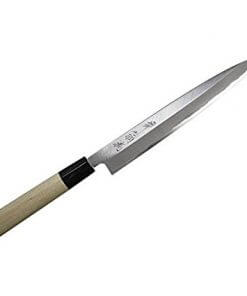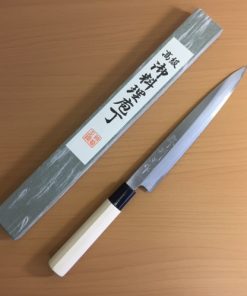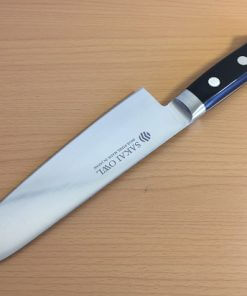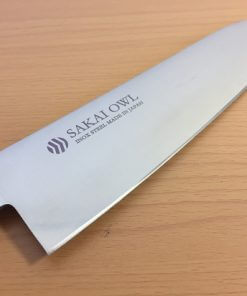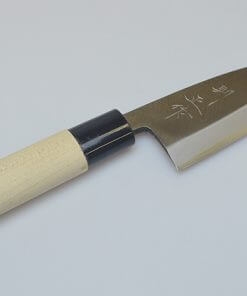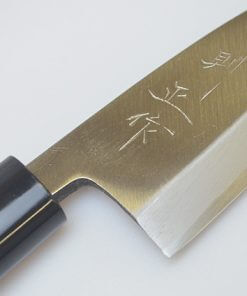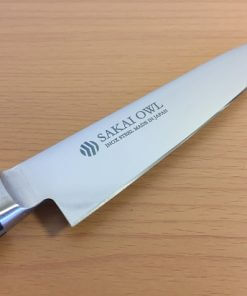Types of Japanese Knives and How to Select One
Types of Japanese Knives
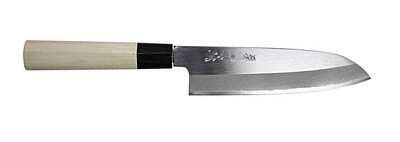
Santoku
The Santoku knife is all-purpose knife with a round tip.
Its blade is thinner and light. Its length is just perfect for home cooking. Santoku literally means “three purposes” which was intended to mean meat, fish and vegetables.
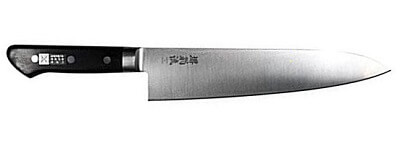
Gyuto
The Gyuto knife has relatively large blade mainly for cutting meat.
This is a Japanese chef’s knife with a Western style curved blade so that it can smoothly move back and forth to chop meat quickly. This can also use for cutting fish and vegetables. The Gyuto is the one of the most versatile knife best for all kinds of professional chefs.
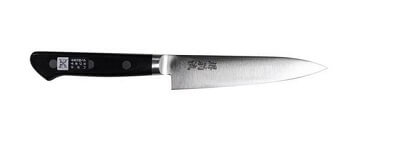
Petty Knife
The Petty Knife has a blade of 11-15cm (4.3-5.9 inches) length.
This type of knife looks like small chef’s knife. Actually, it can maneuver both small and big jobs; it enables you to intricately carve and style vegetables and fruits for beautiful presentations and garnishes; it can also be used to preparing meals.
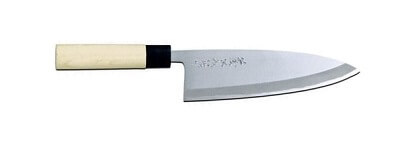
Deba
The Deba knife has thick and heavy blade so that it won’t be bent when applying big power to cut.
This type of knife is mainly used to cut and fillet whole fish in Japan. The heft of the Deba knife allows you to cut through the heads and bones of a fish, and its smaller pointed tip fillets the flesh from the bones. This knife can also be used for meat as well.

Yanagiba
The Yanagiba knife has long leaf-like shaped blade of 18-36cm (7-14 inches) length.
This shape is a result of specializing for a slicing of fish for sushi and sashimi. Its length and shape of the blade allows you to slice through an ingredient with extremely a long stroke, which prevent cut ends of ingredients from being squashy due to multiple strokes.
How to Select the Best Knife for You
Point 1. Expensive knives not necessarily cut things better than lower price ones.
There are three big differences between expensive knives and lower price ones.
(1) Making process are different
First of all, the prices differ greatly between knives made by hand and ones manufactured by machines. The knives made by hand, especially by artisans, have obviously beautiful finishing blades and handles. Because these knives are made, sharpened and checked one by one, cutting qualities are clearly better than mass-produces ones.
You may see products with showy blades on online shops. These knives, however, tend to be not as good as it looks. Or their cutting quality decreases easily and rapidly. In addition, there are “made-in-Japan” knives which have only a few sub-processes done in Japan, whilst the other sub-processes are done outside Japan where labor cost is low.
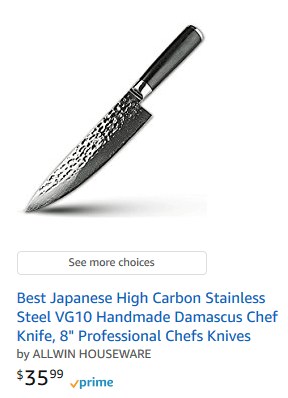
(2) Materials are different
Steel, stainless steel and ceramic are main materials to make knives. Cost of materials and difficulties of processing are reflected on prices. In addition, there are varieties for same material based on its hardness etc., which also be reflected on prices. Generally, harder material costs more.
Tamahagane, a kind of steel used for Japanese Samurai Swords, is one of the most expensive materials, which is made using an original Japanese steel making process. Steel, however, can be rusted and you need to care enough. Stainless steel is easier to care and has enough cutting quality. We don’t recommend ceramic because it’s too hard and unable to sharpen for most people.
(2) Materials are different
Steel, stainless steel and ceramic are main materials to make knives. Cost of materials and difficulties of processing are reflected on prices. In addition, there are varieties for same material based on its hardness etc., which also be reflected on prices. Generally, harder material costs more.
Tamahagane, a kind of steel used for Japanese Samurai Swords, is one of the most expensive materials, which is made using an original Japanese steel making process. Steel, however, can be rusted and you need to care enough. Stainless steel is easier to care and has enough cutting quality. We don’t recommend ceramic because it’s too hard and unable to sharpen for most people.
(3) There is nonessential additional value
Some knives are summed up their prices because of its handle materials or special designing of blades. To give a knife an art-like features and appearances, price gets higher.
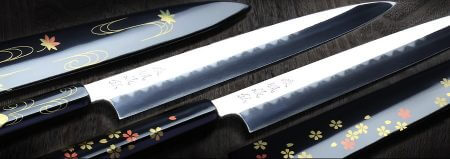
However, those decorations don’t affect cutting quality. Knives made by hand are, even for relatively lower prices, has enough cutting quality and does not yield to those decorated expensive knives.
An important thing is that expensive knives are not necessarily cut things better than lower price ones.
Knives sold in this site are, regardless of prices, handmade and finished by artisans one by one. Those with higher prices are made of expensive metals or handle materials, or put decorations to make them look better.
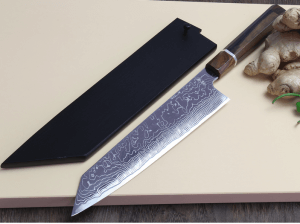
Point 2. Choose Knife Based on Your Purpose
Japanese knives have variations and each type has the best way to use.
If you’re not a professional chef or obsessed about cooking, Santoku knife does enough job for all-purposes.
Also, all knives in this site have cutting quality enough for daily uses. You can choose any one based on your preferences and budget.
Using our highest quality knives, you can cook better by just doing as you do today. Japanese knives cut food to make it delicious!
Here are some cases and types of knife you should choose in each case.
In case you…
- would like to have an all-purpose knife
- want to improve taste of your dishes without practice
- are not obsessed about types of knife you want to get

Then, the Santoku knife is your choice.
Santoku is all-purpose knife and used for any food. Using high quality knife, your cooking skill will naturally be improved. When you’ll become to own another type of knife, you’ll understand naturally which one to buy.
In case you…
- want to mainly cut and dish vegetables or fruits
- want to use a knife in dining table
- want to take it with you outside for BBQ etc.

Then, the Petty knife is your choice.
It has a small blade of 11-15cm (4.3-5.9 inches) length. So, you can handle it safe and easy in dining table or outside.
Although it is small (petty), the knife is handmade by artisans with traditional method same as other Japanese knives. Its cutting quality is just same as larger knives, so handle with care!
In case you…
- would like to cut and fillet whole fish
- want to cut and dish sashimi
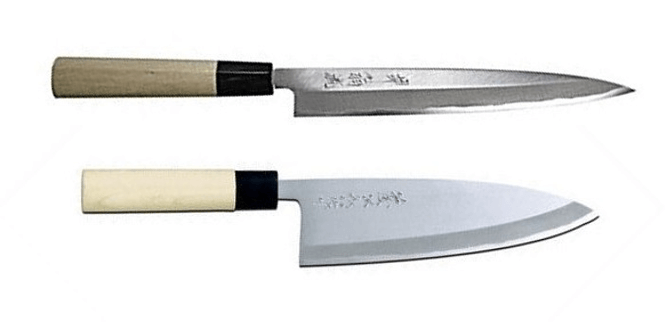
If you would like to fillet whole fish, cut through heads and bones, the Deba knife is your choice.
If you would like to cut and dish sashimi only, then the Yanagiba knife is your choice.
Length and shape of the blade of Yanagiba allows you to slice through an ingredient with extremely a long stroke, which prevent cut ends of ingredients from being squashy. You’ll understand how taste of sashimi is different from those cut by normal knives.
Because Deba is good enough for sashimi, you can own only Deba for cooking fish anyway.
Our Products
CONTENTS
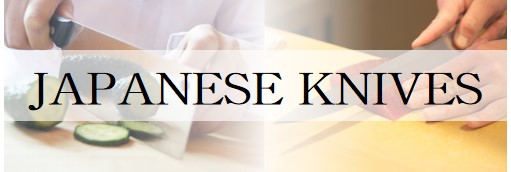
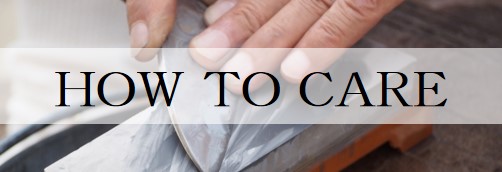
PRODUCT CATEGORIES
Santoku Knife

Gyuto Knife

Petit Knife

Deba Knife

Yanagiba Knife


